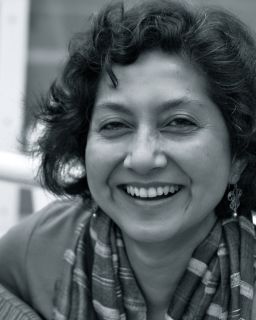Editor’s Note: Isha Ray is an associate professor with the Energy and Resources Group and the co-director of the Berkeley Water Center at the University of California, Berkeley. The views expressed are her own.
Story highlights
A heatwave in India has claimed almost 2,000 lives
Isha Ray: Urban poor are especially vulnerable to heat waves
India is in the grip of a deadly heat wave. Daytime temperatures in many states have been running upward of 110 degrees, while nighttime temperatures have barely been dropping below 100 degrees. As a result of these oppressive temperatures, almost 2,000 people have died, with the southern states of Andhra Pradesh and neighboring Telangana bearing the brunt of the fatalities.
And while heat-related deaths are an annual feature of India’s summers – every year, about a thousand people die of heatstroke or of heat-exacerbated illnesses, and thousands more are taken to clinics and hospitals for treatment – it looks like this year might be a tragically record-breaking one.
The crisis has left local governments in the worst-affected states scrambling to find ways of coping. Drinking water distribution camps have sprung up, while messages are being circulated via new and conventional media exhorting people to stay indoors, drink plenty of water, avoid the sun and use hats and umbrellas when they have to venture out.

Sound as these recommendations are, they are not enough to stop large numbers of the elderly, pavement or slum dwellers in metal shacks, and construction workers with no choice but to work from being subjected to unbearable heat.
The reality is, of course, that this heat wave was not totally unexpected. The third week of May is a traditionally deadly week, according to the Indian Meteorological Department of Hyderabad, the joint capital of Andhra Pradesh and Telangana. That hasn’t stopped this from being an example of what the American sociologist William Julius Wilson described as an “emergency in slow motion,” an accumulation of individual troubles that together can overwhelm a city or a community.
India’s heat wave of 2015 is like that: an emergency that could not have been completely avoided. However, with a little more planning, a little more coordination and a lot more free drinking water, it could have been mitigated.
Look at the state of Odisha, a poorer state than the two that have been worst affected but which has seen a sharp drop in heat-related deaths compared with the past. It has implemented a multi-agency planning process including the opening of water distribution booths across the state, and a plan under which many government offices and schools start the workday very early – as early as 6:30 a.m. – and halt at noon. Public works programs that hire the poor for a daily wage, meanwhile, are halted between noon and 4 p.m. (many of those who die each year are workers on construction sites).
Such changes recognize that it is usually the urban poor who are especially vulnerable to heat waves, because cities have more heat-reflecting concrete and fewer shady areas than many rural areas do.
But it isn’t just Odisha that has something to teach other states; Ahmedabad, the capital of Gujarat, also has an effective multi-agency heat action plan. The plan, developed with Georgia Tech and the Natural Resources Defense Council, makes predictions several days in advance and creates public resting spaces with shade for those who must work outside. In addition, free water is provided throughout the city, and medical workers are trained to quickly treat the symptoms of heatstroke.
Both these examples show the critical need for coordination between India’s usually fragmented government agencies. True, over 90% of India’s population has a source of improved water (e.g. piped water, protected springs and wells, or harvested rainwater) within a kilometer of their dwelling. But for the millions who do not have a dwelling to speak of, or who spend long hours away as day laborers or moving with their families from construction site to construction site, there is little “last mile” access to drinking water.
With this in mind, states must do more to ensure the provision of free drinking water at multiple access points, at least during April to June, a move that would help protect thousands from dehydration and fulfill this most basic of human needs. To make this possible, public taps must also be kept in working condition, especially during these months, while the removal of public taps under pressure from water privatization must be strongly resisted. None of this requires predicting when a heat wave will occur; it is always extremely hot between April and June, and the working poor and the elderly are always in need of affordable drinking water during the day.
The voluntary water “camps” that spring up during heat waves, especially in cities, are a start. But the reach of coordinated state action can provide services at an altogether different scale. States already, on average, spend a little under 2% of their total expenditures on water and sanitation, so free water booths for three months of the year would add relatively little to costs.
India’s summers are brutal – nothing will change that. But they need not be so deadly. The country’s states have the financial and institutional capacity to alleviate the human suffering that comes annually with the hot winds and abates with the monsoons. The question is whether they have the foresight to follow the lead of those states that are trying to step up to the challenge.
















